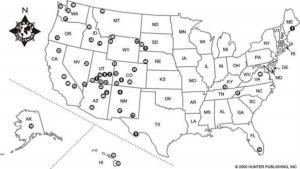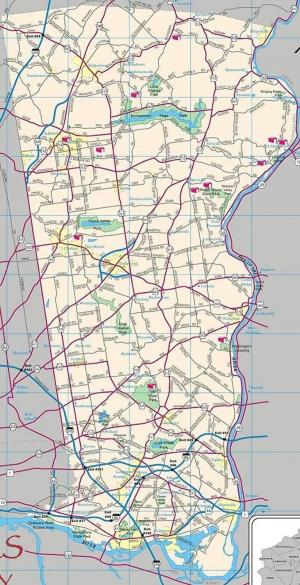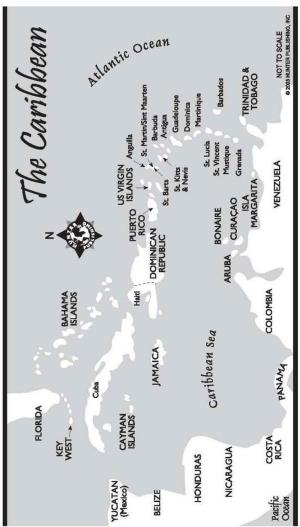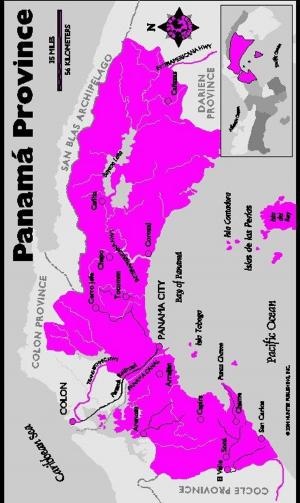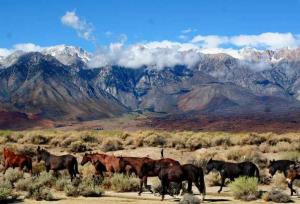| Author: | Thomas Booth | ISBN: | 9781556500435 |
| Publisher: | Hunter | Publication: | July 20, 2012 |
| Imprint: | Hunter | Language: | English |
| Author: | Thomas Booth |
| ISBN: | 9781556500435 |
| Publisher: | Hunter |
| Publication: | July 20, 2012 |
| Imprint: | Hunter |
| Language: | English |
Tourism, while still small, will surely be a big thing in this kingdom by the sea. It has many attractions the king himself, his palace, the beaches, lagoons, flying foxes, blowholes, ruins, exquisite outer islands, and convenient transport. There's good food, perhaps the best in the Pacific, and the weather is cooler than many other Pacific islands. Tonga has good things to bring home: tapa cloth, wood carvings, beautiful baskets, mats and, best of all, prices for everything are low. Tongans are friendly people, a quality Captain Cook recognized 200 years ago when he dubbed this group "The Friendly Islands." The Kingdom of Tonga, Polynesia's oldest monarchy, consists of three main island groups Tongatapu-Eua, Ha'apai, Vava'u and, at a considerable distance to the north, tiny Niuafo'ou (or Tin Can Island) and Niuatoputapu Island. Within these groups there are 170 islands, 36 of which are inhabited, with a total population of 100,000. Most of the Tongans, 65,000, live on Tongatapu, the main island. The King does too, and so do numbers of enterprising Indians, Chinese, a few Americans, New Zealanders, and Australians. Nuku'alofa, a town with a population of 25,000, is where it all happens. Tonga's ruling monarch, King Tupou VI, who can trace his ancestry back a thousand years, lives in the prominent, often photographed Victorian palace that's surrounded by Norfolk pines, near town. You can't miss it. You also can't get into it, because it's off limits to the public. The best one can do is stand outside the fence and snap photos. Archeologists say that, while Tonga has been inhabited since the fifth century BC, details of those days belong mostly to mythology. Recorded history begins with the arrival of European explorers. Tasman arrived at Tongatapu in 1643, Wallace followed a century later, and in 1773 that most active of sailors; Captain Cook, appeared. He is the one who gave Tonga the name "Friendly Islands," an appropriate name for today, though for Cook it was a tongue-in-cheek label. This is the most detailed guide available to these islands - where to stay, how to get around, what to see and do, with color photos throughout.
Tourism, while still small, will surely be a big thing in this kingdom by the sea. It has many attractions the king himself, his palace, the beaches, lagoons, flying foxes, blowholes, ruins, exquisite outer islands, and convenient transport. There's good food, perhaps the best in the Pacific, and the weather is cooler than many other Pacific islands. Tonga has good things to bring home: tapa cloth, wood carvings, beautiful baskets, mats and, best of all, prices for everything are low. Tongans are friendly people, a quality Captain Cook recognized 200 years ago when he dubbed this group "The Friendly Islands." The Kingdom of Tonga, Polynesia's oldest monarchy, consists of three main island groups Tongatapu-Eua, Ha'apai, Vava'u and, at a considerable distance to the north, tiny Niuafo'ou (or Tin Can Island) and Niuatoputapu Island. Within these groups there are 170 islands, 36 of which are inhabited, with a total population of 100,000. Most of the Tongans, 65,000, live on Tongatapu, the main island. The King does too, and so do numbers of enterprising Indians, Chinese, a few Americans, New Zealanders, and Australians. Nuku'alofa, a town with a population of 25,000, is where it all happens. Tonga's ruling monarch, King Tupou VI, who can trace his ancestry back a thousand years, lives in the prominent, often photographed Victorian palace that's surrounded by Norfolk pines, near town. You can't miss it. You also can't get into it, because it's off limits to the public. The best one can do is stand outside the fence and snap photos. Archeologists say that, while Tonga has been inhabited since the fifth century BC, details of those days belong mostly to mythology. Recorded history begins with the arrival of European explorers. Tasman arrived at Tongatapu in 1643, Wallace followed a century later, and in 1773 that most active of sailors; Captain Cook, appeared. He is the one who gave Tonga the name "Friendly Islands," an appropriate name for today, though for Cook it was a tongue-in-cheek label. This is the most detailed guide available to these islands - where to stay, how to get around, what to see and do, with color photos throughout.

